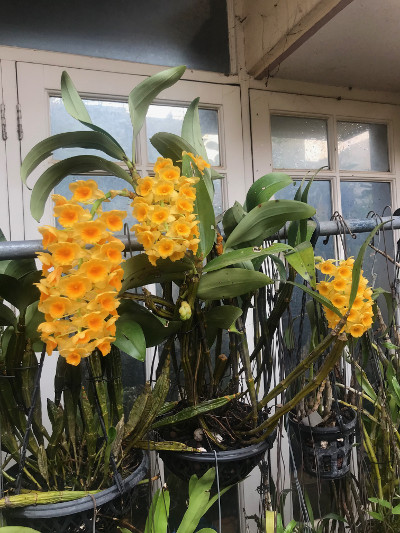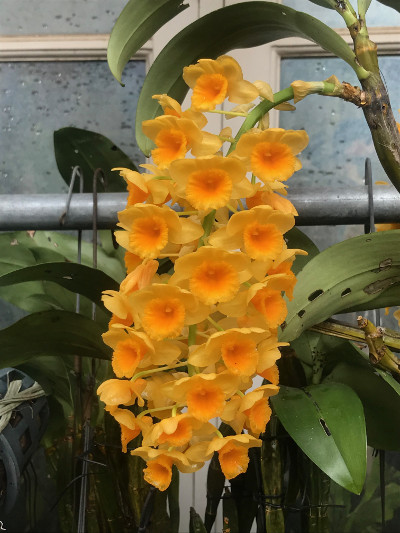Orchid Care for the month of March |
|
| Orchid Care for this month (March).
1) We are entering a phase of Dry and hot summers with very low humidity (<15%) during the day 2) New growths and buds are susceptible to sun burn. Adding a additional layer of shade cloth during this time would be beneficial. 3) Water thoroughly and multiple times during the day. Humidity usually is the lowest around 3-5 PM and watering well around that time would help prevent excessive water loss 4) Most of the deciduous Orchids should be spiking. keep a close watch on the buds for signs of pest attack. Ensure that the spikes are presented well 5) Dry season is the peak season for mites and there are few orchids that are mite magnets (Catasetum, Grammatophyllum, Phalaenopsis, Thunia, etc). Keep a close watch on the under side of the leaves. jet spray of water in the underside would help prevent. periodic preventive spray of neem based pesticide could largely help 6) Start of new growing season is a period of investment for future blooms. Promoting strong root growth this month would help establish healthy plants. healthy plants would produce healthy blooms. using seaweed extract could help in promoting healthy rooting 7) Keep a couple of bottles of hydrogen peroxide handy for any quick band-aid treatments for bacterial and surface treatments of fungal infections. 8) Remove dried leaves/sheath during this time as dried material absorbs more water and invite fungal and bacterial infections. Keeping the grow area clean would help. 9) Start feeding NPK and micro-nutrients at a half dose till establishing of good roots. Calcium and Magnesium can be fed alternative weeks |
Species of the Month |
|
 Dendrobium densiflorum Lindl. |
 Dendrobium densiflorum Lindl. |
| Dendrobium densiflorum – Densely flowered Dendrobium and also known as Pineapple orchid Distribution: These are normally from mainland Asia with India, Myanmar, Thailand and Indochina being the major distribution pockets. In India, NE is the natural home of this species. Generally grows at an altitude of 1000 M as an epiphyte. In its natural habitat the seasonal conditions are distinct. Plant: The pseudobulbs are 30 – 45 cm long, with several angles (distinguishing feature from D. farmeri) and about 2 cm in diameter. Persistent leaves numbering 3-5 remain on the pseudobulbs. The leaves are generally grouped at the apex. Culture: The species prefers intermediate to cool growing conditions. They require bright light, preferably full morning sun and filtered one later. The plant has to be watered copiously during growth stage and after the current year growth switches to maturity, watering can be reduced. Pictures and Article: Sriram Kumar |
|